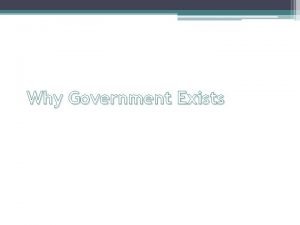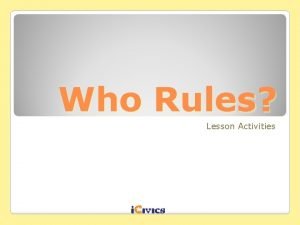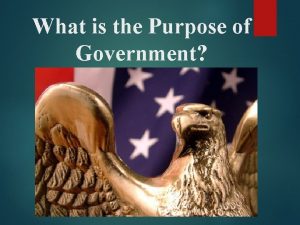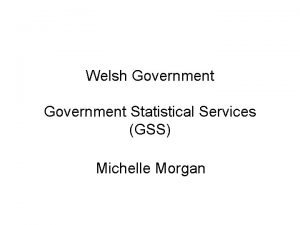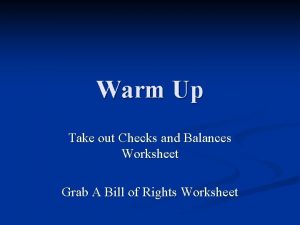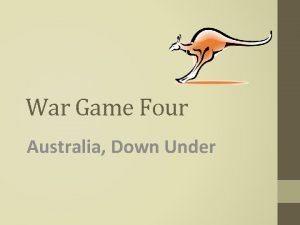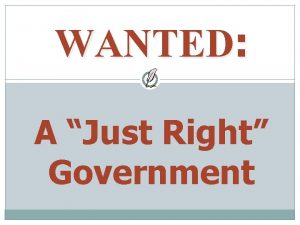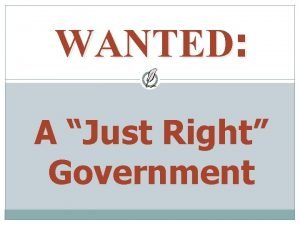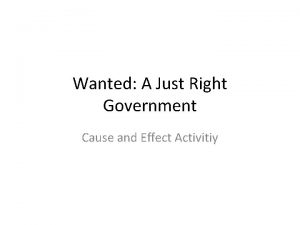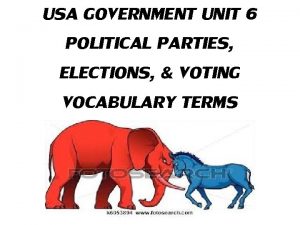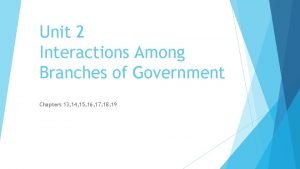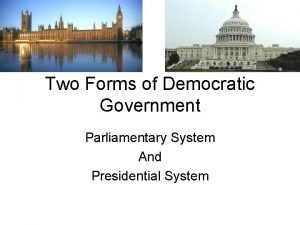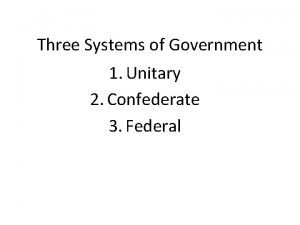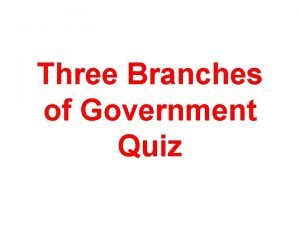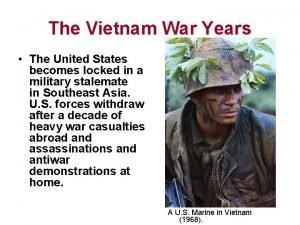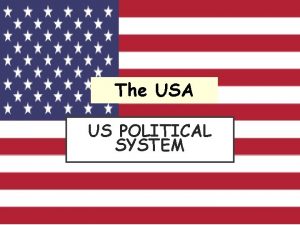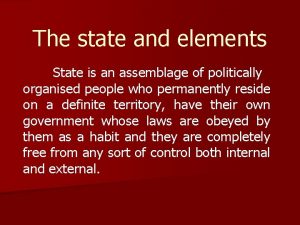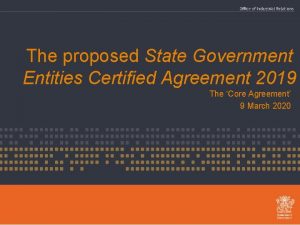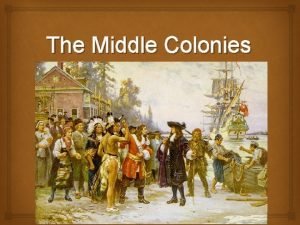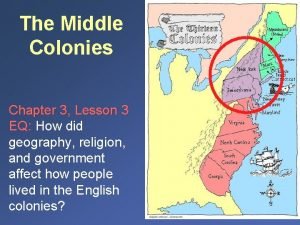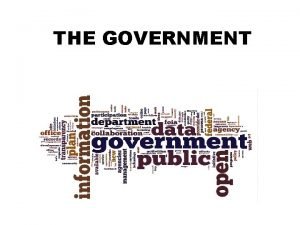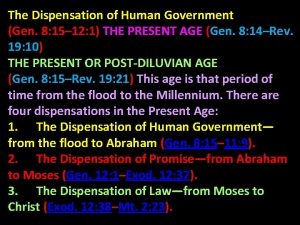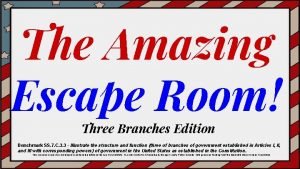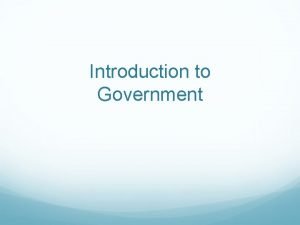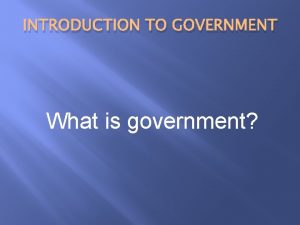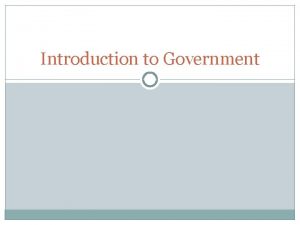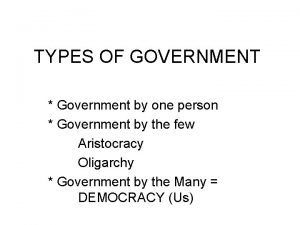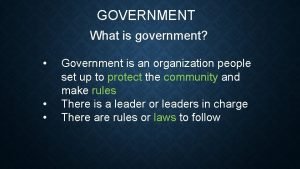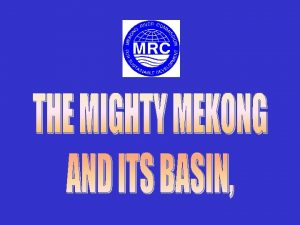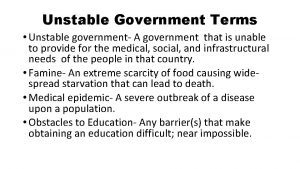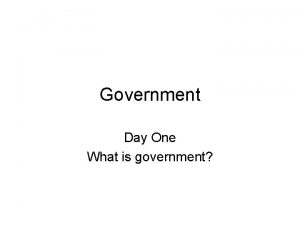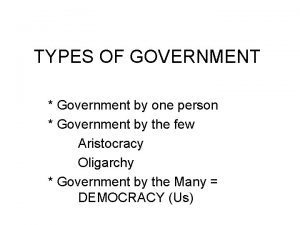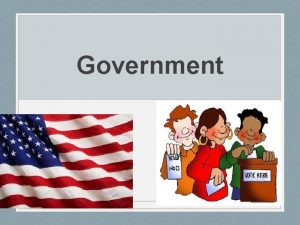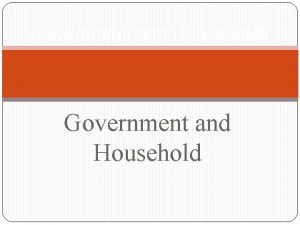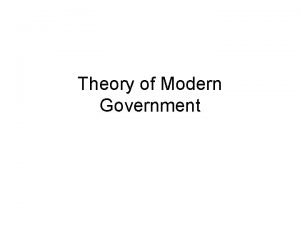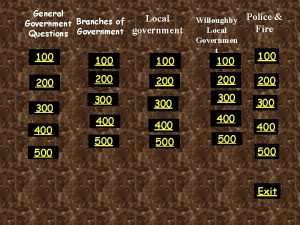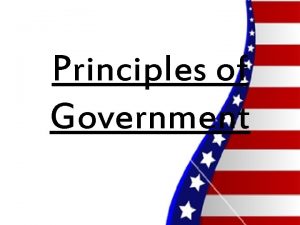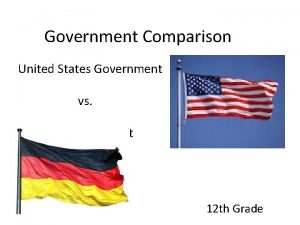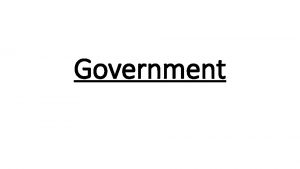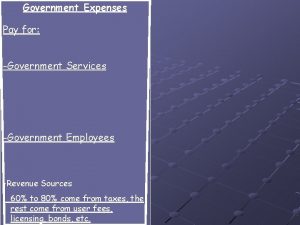Introduction to Government Introduction to Government n n































- Slides: 31

Introduction to Government

Introduction to Government n n n Key Ideas: What is Government? How did Governments form? Who has power in Government? What do Governments Provide?

State n n A State – body of people living in a defined territory and organized under one government The word state can be used to describe people living in a specific country

Government n n Government is an institution through which a society makes and enforces its public policies (Rules) Governments take multiple forms and are run in a variety of ways

Theories on how Government began n n The Force Theory – one person or group of people take control of an area with force. The Evolutionary Theory – developed out of the head of each family developing rules. Over time families moved near each other and created tribes

Theories on how Government began n n Divine Right Theory – a higher being gave authority for a person to rule a country. Popular during the Middle Ages in Europe Social Contract Theory – People agree to create a government and give it power to protect their well-being

Which of the four theories best describes the idea behind the U. S. Government?

What is the Purpose of the U. S. Government? n The Preamble of the Constitution explains the purpose of the U. S. Government

Preamble n “We the people of the United States, in order to form a more perfect union, establish justice, insure domestic tranquility, provide for the common defense, promote the general welfare, and secure the blessings of liberty to ourselves and our posterity, do ordain and establish this Constitution for the United States of America. ”

Purpose of U. S. Government n n Form a Perfect Union – bring American people closer together Establish Justice – create fair laws and courts Insure Domestic Tranquility – keep well being of society and peace at home Provide Common Defense – defend the nation from foreign attacks

n n n Provide General Welfare – provide services for people (transportation, school, etc. ) Secure the Blessings of Liberty – freedoms need to be protected Assignment: Chapter 1 Section 1

Sovereignty n Each country has its own right and power to make decisions within its borders

Unitary System of Government Key Facts n Most governments in the world are unitary n Most power is held by a central (National) government n Local governments are given power from the central government Example: England



Unitary Governments

Confederation System of Government n Key Facts Independent states have a lot of power and tell the Central Government what it is allowed to do n The Central Government is weak Examples: USA under Articles of Confederation, Civil War South Serbia until 2006 n


Federal System of Government n n Key Facts: a number of states form into a union Power is divided between central government and local governments Government acts directly with the people Example: United States

Federal Systems



Absolute Monarchy n n n Key Facts Unitary Government ruled by Kings or Queens The Monarch has most of the power in the nation Example: Saudi Arabia

Totalitarian Government n n n Key Facts: Unitary Central government rules by force Total control over the lives of citizens Common to have dictatorships Example: Libya until 2011

Oligarchy Key Facts n Unitary n Rulers are made up of an elite group of people n Elite group usually made up of wealthy, military leaders, or noble families n Elite group is usually well educated Examples: Sparta (ancient Greece), n

Communism n n n Key Facts Communist party runs the country Government has ownership over industries and land Government controls aspects of life for its citizens Government faces challenges of distributing goods to the people Example: Former Soviet Union

Places that are considered centrally controlled Socialist States today

Constitutional Monarchy and Parliament Governments Usually Unitary n Elected Parliament with royal family n Parliament has power in nation and a Prime Minister is the government leader n Royal family serves as political figures Example: Great Britain, Belgium n

How Parliament is Different from the U. S. System 1 3 Chapter 1, Section 2

n n Key Facts: Democracy Public contribute to making laws, providing services, and making decisions for the country Two Kinds of Democracy: n Direct Democracy – everyone meets and makes decisions n Representative Democracy – people elect representatives to carry on the work of government for them (USA)

Forms of Government 1 3 Chapter 1, Section 2
 National powers
National powers Merits of parliamentary government
Merits of parliamentary government Local government finance
Local government finance Conclusion paragraph format
Conclusion paragraph format Confederation system of government
Confederation system of government Forms of government graphic organizer
Forms of government graphic organizer Purpose of government
Purpose of government Gss fast stream
Gss fast stream Chachua primary school
Chachua primary school Checks and balances activity
Checks and balances activity Limited government examples
Limited government examples Who represents the queen in australia's government
Who represents the queen in australia's government A just right government
A just right government Wanted a just right government
Wanted a just right government Wanted a just right government cause and effect
Wanted a just right government cause and effect Cross-pressured voter definition government
Cross-pressured voter definition government Fiscal policy practice
Fiscal policy practice Congress formal and informal powers
Congress formal and informal powers Presidential vs parliamentary
Presidential vs parliamentary Qwest government services
Qwest government services What is a unitary system of government
What is a unitary system of government Three branches of government quiz
Three branches of government quiz Vietnamese government
Vietnamese government The usa
The usa Government elements of state
Government elements of state State government entities certified agreement 2019
State government entities certified agreement 2019 Government of the middle colonies
Government of the middle colonies Government of the middle colonies
Government of the middle colonies What is the government
What is the government The dispensation of human government
The dispensation of human government Branches of government escape room
Branches of government escape room Chachua government primary school
Chachua government primary school




